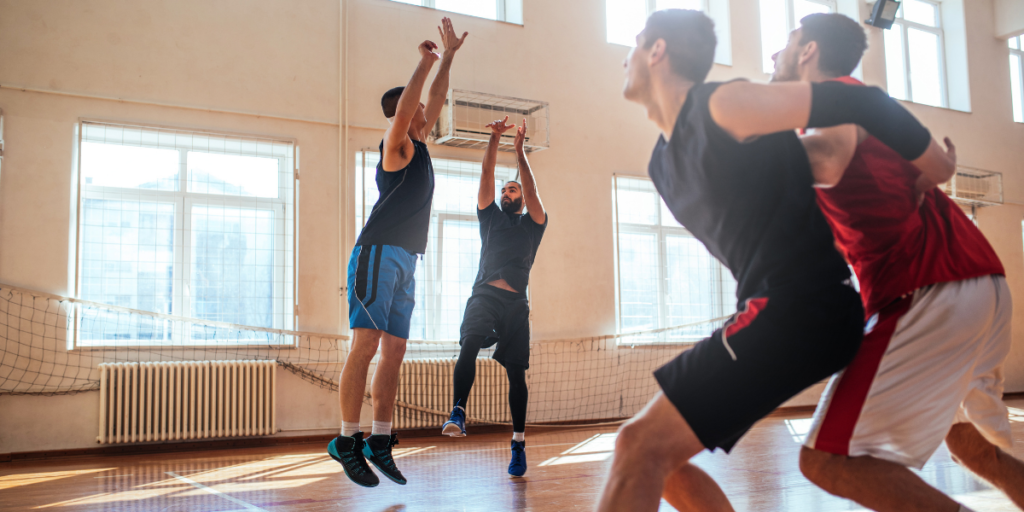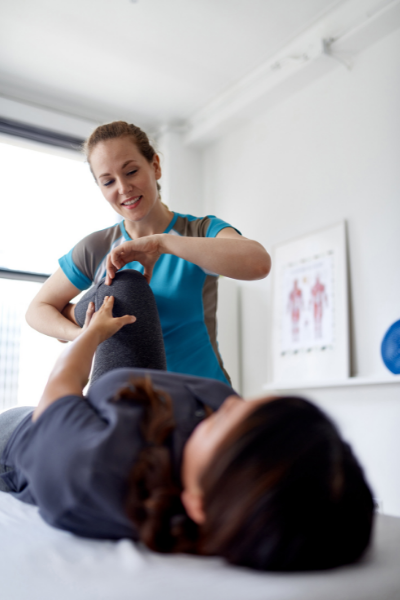
The medial collateral ligament (MCL) is one of the ligaments on the inner side of the knee. The MCL connects the bottom the thighbone (femur) to the top of the shinbone (tibia) to manage side to side movement. The ligament is a band of dense connective tissue, made up of bundles of collagen and a matrix (or web) of proteins, glycoproteins and elastic systems. The structure of the ligament helps it to withstand stresses and strains from different directions.
Symptoms of a MCL Injury

At the moment of injury, some people describe a popping sensation. Most people describe a sense of the knee giving way or feeling like it went from underneath them.
Every MCL injury is different, but immediate pain and swelling is common. You may find it hard to put weight on that leg or experience ongoing pain when the knee is stretched.
Causes of a MCL Injury

MCL injuries often occur during sports that require pivoting and jumping, particularly sports like basketball, tennis, netball, or rugby. The MCL may be put under strain with common manoeuvres in these sports, causing the knee to give way from under the athlete.
A MCL tear can also occur with a forceful hit to the side of the knee.
How to Diagnose a MCL Injury
In most instances, a clinical examination with a physiotherapist or a sport and exercise physician will be able to identify signs and symptoms of a MCL injury. The therapist will ask a series of questions about what happened and conduct tests to determine the integrity of all of the ligaments, and other structures, in the knee.
An MRI scan can help identify a MCL tear as well as any other injury that can sometimes occur at the same time, such as bone bruising or meniscal (cartilage) injuries. An X-ray may be conducted to rule out an associated fracture (broken bone) that may have occurred on impact.
If you have any questions or concerns, please make sure you contact your local physiotherapist or sports and exercise physician.
Treatment Options for a MCL Injury

It is important to discuss treatment options with your physiotherapist, sports and exercise physician, or your GP.
There are a number of factors that will influence your decisions about how to manage the injury including, but not limited, to:
- Your age
- Whether you are regularly involved in activities that involve a lot of twisting, jumping, change of direction etc
- Your goals
- Previous injuries
- What other responsibilities you have (e.g., work, family etc)
Non-Surgical Treatments
A specific and individualised knee rehabilitation program is considered the most effective non-surgical option to recover from a MCL injury. There is good evidence that these types of programs can be very effective for some people – it is really important you discuss whether non-surgical treatment is right for you with your physio or treating doctor.
A physiotherapist will help you develop the program, and it is likely to focus on:
- Proprioception (body position awareness)
- Lower limb strengthening and balance
- Reducing pain and inflammation
- Technique training (e.g., jumping, landing, pivoting)
For athletes, an additional focus on sport-specific agility is also recommended.
Surgical Treatments
Surgery for an MCL injury is usually reserved for more severe cases and can be performed two different ways – a repair or a reconstruction.
As with all surgery, there are associated risks – your surgeon will discuss these with you but can include:
- Infection
- Persistent instability/pain
- Knee stiffness
- Nerve injury
- Loss of knee movement
- Ongoing instability and pain in the knee
MCL Repair – involves making a small incision near the tear and using sutures to secure the ligament back to the bone.
MCL Reconstruction – a graft is taken from the hamstring or a donor and fixed into place using anchors or screws.
Post-Surgery Rehabiliation
Most patients can usually return home the same day as the surgery, but it is not uncommon to stay overnight. There will be a post-operative check-up after 1-2 weeks where the doctor will remove the stitches.
Following surgery, a comprehensive rehabilitation program is the most effective way to ensure you are able to successfully return to all the activities you love to do.
Each surgeon will have a post-operative protocol that will be dependent on their surgical technique and preference. Working with guidance from your surgeon, your physiotherapist will design a rehabilitation program that suits you and helps you achieve your goals. Please consult with your surgeon and treating physiotherapist before engaging in any activity that may inhibit the recovery process.
The recovery time can vary but is typically between 9-12 months.

FAQs
How can I prepare for a physiotherapist appointment?
A physiotherapist will want to understand your area of concerns by discussing any factors that may contribute to your pain or immobility.
It is recommended that you note down any symptoms you are experiencing and when they began, your personal and family medical history, current medications, and any questions you might want to ask during your appointment.
What can I expect when seeing a physiotherapist?
A physiotherapist may conduct a physical examination of your area of concern, discuss your day-to-day activity and medical history, and prescribe a treatment plan for recovery.
When should I see a physiotherapist?
A physiotherapist can help you to reduce or manage pain and immobility throughout your body. If your concerns are impeding on your ability to participate in your regular activities, it may be time to see a physiotherapist.
The longer these concerns are left unattended, the harder they can be to treat down the track.
